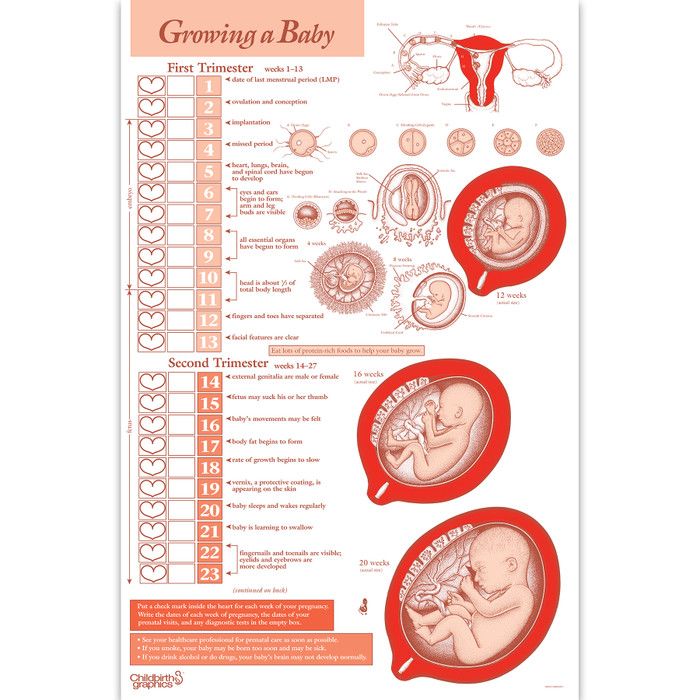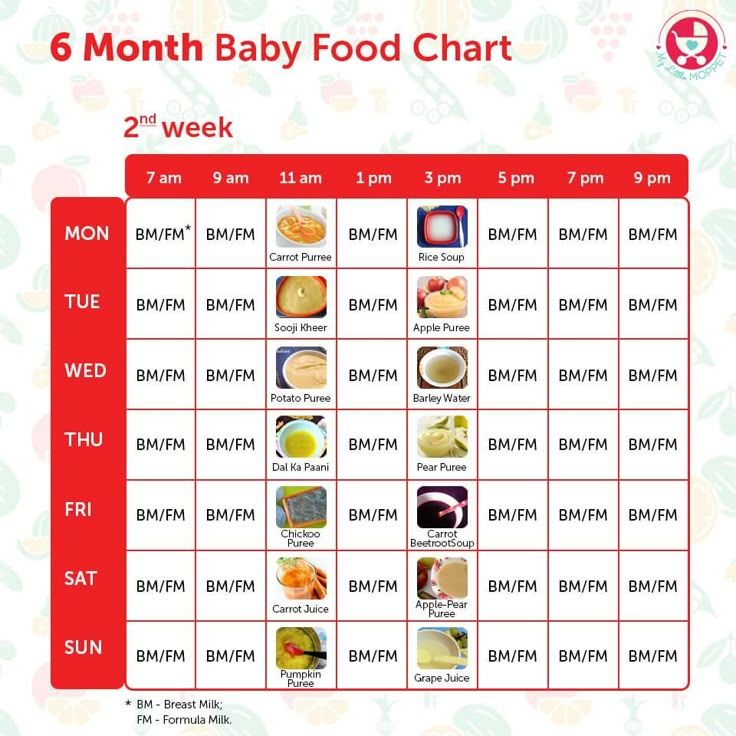Food for baby in womb
Pregnancy Diet: 13 Foods to Eat While Pregnant
Pregnant? Hangry? Looking for a snack that will make your tummy and your baby happy? You’re probably hearing it a lot: Eating nutritious foods while pregnant is essential.
We’re here to make your pantry into a one-stop shop of healthy and delicious foods that will give your baby the best start to life.
When building your healthy eating plan, you’ll want to focus on whole foods that give you higher amounts of the good stuff you’d need when not pregnant such as:
- protein
- vitamins and minerals
- healthy types of fat
- complex carbohydrates
- fiber and fluids
Here are 13 super nutritious foods to eat when you’re pregnant to help make sure you’re hitting those nutrient goals.
During pregnancy, you need to consume extra protein and calcium to meet the needs of your growing little one. Dairy products like milk, cheese, and yogurt should be on the docket.
Dairy products contain two types of high-quality protein: casein and whey. Dairy is the best dietary source of calcium, and provides high amounts of phosphorus, B vitamins, magnesium, and zinc.
Yogurt, especially Greek yogurt, contains more calcium than most other dairy products and is especially beneficial. Some varieties also contain probiotic bacteria, which support digestive health.
If you’re lactose intolerant, you may also be able to tolerate yogurt, especially probiotic yogurt. Check with your doctor to see if you can test it out. A whole world of yogurt smoothies, parfaits, and lassi could be waiting.
This group of food includes lentils, peas, beans, chickpeas, soybeans, and peanuts (aka all kinds of fabulous recipe ingredients!).
Legumes are great plant-based sources of fiber, protein, iron, folate, and calcium — all of which your body needs more of during pregnancy.
Folate is one of the most essential B vitamins (B9). It’s very important for you and baby, especially during the first trimester, and even before.
You’ll need at least 600 micrograms (mcg) of folate every day, which can be a challenge to achieve with foods alone. But adding in legumes can help get you there along with supplementation based on your doctor’s recommendation.
But adding in legumes can help get you there along with supplementation based on your doctor’s recommendation.
Legumes are generally very high in fiber, too. Some varieties are also high in iron, magnesium, and potassium. Consider adding legumes to your diet with meals like hummus on whole grain toast, black beans in a taco salad, or a lentil curry.
Sweet potatoes are not only delicious cooked about a thousand ways, they’re also rich in beta carotene, a plant compound that is converted into vitamin A in your body.
Vitamin A is essential for baby’s development. Just watch out for excessive amounts of animal-based sources of vitamin A, such as organ meats, which can cause toxicity in high amounts.
Thankfully, sweet potatoes are an ample plant-based source of beta carotene and fiber. Fiber keeps you full longer, reduces blood sugar spikes, and improves digestive health (which can really help if that pregnancy constipation hits).
For a fab brekky, try sweet potatoes as a base for your morning avocado toast.
Smoked on a whole wheat bagel, teriyaki grilled, or slathered in pesto, salmon is a welcome addition to this list. Salmon is rich in essential omega-3 fatty acids that have a host of benefits.
These are found in high amounts in seafood, and help build the brain and eyes of your baby and can even help increase gestational length.
But wait: Have you been told to limit your seafood intake due to the mercury and other contaminants found in high mercury fish? You can still eat fatty fish like salmon.
Here are the high mercury fish to avoid:
- swordfish
- shark
- king mackerel
- marlin
- bigeye tuna
- tilefish from the Gulf of Mexico
Plus, salmon is one of the very few natural sources of vitamin D, which is lacking for most of us. It’s important for bone health and immune function.
Those incredible, edible eggs are the ultimate health food, as they contain a little bit of almost every nutrient you need. A large egg contains about 80 calories, high-quality protein, fat, and many vitamins and minerals.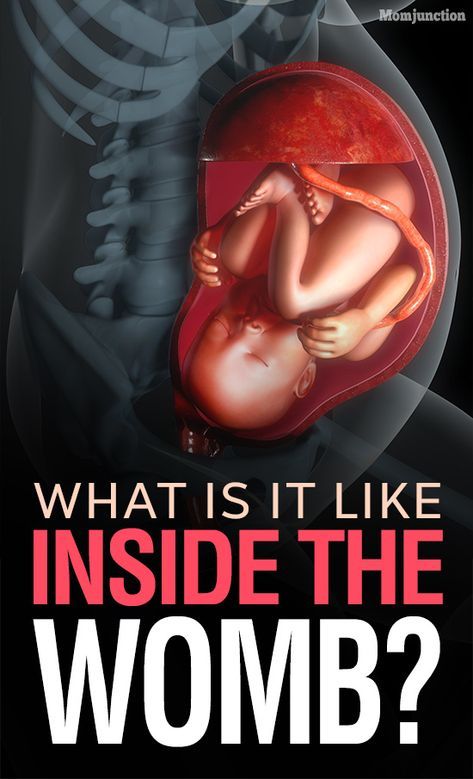
Eggs are a great source of choline, a vital nutrient during pregnancy. It’s important in baby’s brain development and helps prevent developmental abnormalities of the brain and spine.
A single whole egg contains roughly 147 milligrams (mg) of choline, which will get you closer to the current recommended choline intake of 450 mg per day while pregnant (though more studies are being done to determine if that is enough).
Here are some of the healthiest ways to cook eggs. Try them in spinach feta wraps or a chickpea scramble.
No surprise here: Broccoli and dark, green vegetables, such as kale and spinach, pack in so many of the nutrients you’ll need. Even if you don’t love eating them, they can often be squirreled into all kinds of dishes.
Benefits include fiber, vitamin C, vitamin K, vitamin A, calcium, iron, folate, and potassium. They’re a bonanza of green goodness.
Adding in servings of green veggies is an efficient way to pack in vitamins and fend off constipation due to all that fiber. Vegetables have also been linked to a reduced risk of low birth weight.
Vegetables have also been linked to a reduced risk of low birth weight.
Try this kale eggs Florentine recipe or blend some spinach into a green smoothie and you won’t even know it’s in there.
Lean beef, pork, and chicken are excellent sources of high-quality protein. Beef and pork are also rich in iron, choline, and other B vitamins — all of which you’ll need in higher amounts during pregnancy.
Iron is an essential mineral that is used by red blood cells as a part of hemoglobin. You’ll need more iron since your blood volume is increasing. This is particularly important during your third trimester.
Low levels of iron during early and mid-pregnancy may cause iron deficiency anemia, which increases the risk of low birth weight and other complications.
It can be hard to cover your iron needs with meals alone, especially if you develop an aversion to meat or are vegetarian or vegan. However, for those who can, eating lean red meat regularly may help increase the amount of iron you’re getting from food.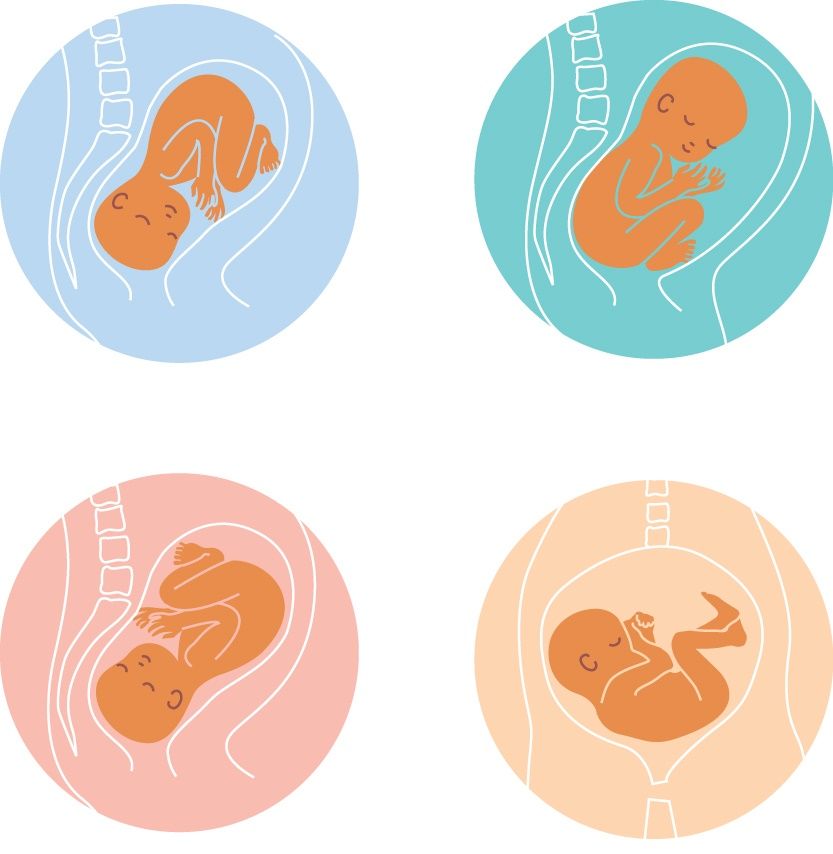
Pro tip: Pairing foods that are rich in vitamin C, such as oranges or bell peppers, along with iron-rich foods may also help increase absorption.
Toss some vitamin C-rich tomato slices on that turkey burger or whip up this steak and mango salad.
Berries hold a lot of goodness in their tiny packages like water, healthy carbs, vitamin C, fiber, and antioxidants.
Berries have a relatively low glycemic index value, so they should not cause major spikes in blood sugar.
Berries are also a great snack, as they contain both water and fiber. They provide a lot of flavor and nutrition, but with relatively few calories.
Some of the best berries to eat while pregnant are blueberries, raspberries, goji berries, strawberries, and acai berries. Check out this blueberry smoothie for some inspiration.
Unlike their refined counterparts, whole grains are packed with fiber, vitamins, and plant compounds. Think oats, quinoa, brown rice, wheat berries, and barley instead of white bread, pasta, and white rice.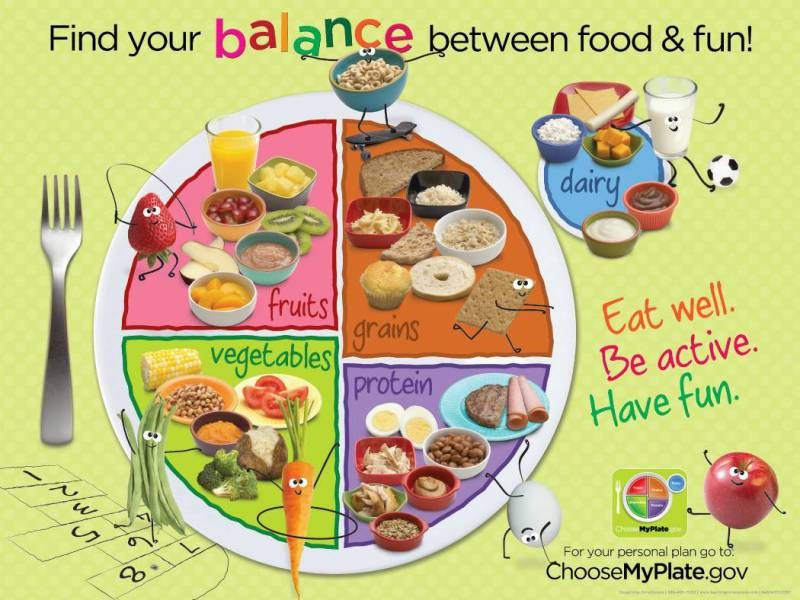
Some whole grains, like oats and quinoa, also contain a fair amount of protein. They also hit a few buttons that are often lacking in pregnant people: B vitamins, fiber, and magnesium.
There are so many ways to adds whole grains to any meal, but we’re especially liking this quinoa and roasted sweet potato bowl.
Avocados are an unusual fruit because they contain a lot of monounsaturated fatty acids. This makes them taste buttery and rich — perfect for adding depth and creaminess to a dish.
They’re also high in fiber, B vitamins (especially folate), vitamin K, potassium, copper, vitamin E, and vitamin C.
Because of their high content of healthy fats, folate, and potassium, avocados are a great choice during pregnancy (and always).
The healthy fats help build the skin, brain, and tissues of your little one, and folate may help prevent neural tube defects, developmental abnormalities of the brain and spine such as spina bifida.
Potassium may help relieve leg cramps, a side effect of pregnancy for some women.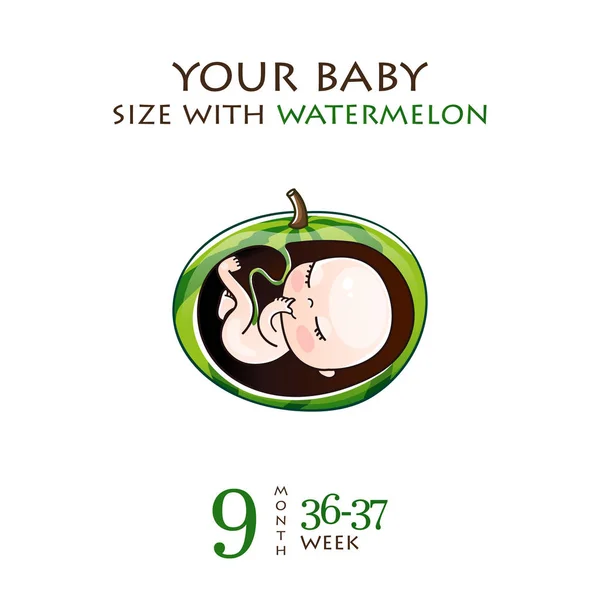 In fact, avocados contain more potassium than bananas.
In fact, avocados contain more potassium than bananas.
Try them as guacamole, in salads, in smoothies, and on whole wheat toast, but also as a substitute for mayo or sour cream.
Dried fruit is generally high in calories, fiber, and various vitamins and minerals. One piece of dried fruit contains the same amount of nutrients as fresh fruit, just without all the water and in a much smaller form.
One serving of dried fruit can provide a large percentage of the recommended intake of many vitamins and minerals, including folate, iron, and potassium.
Prunes are rich in fiber, potassium, and vitamin K. They’re natural laxatives and may be very helpful in relieving constipation. Dates are high in fiber, potassium, iron, and plant compounds.
However, dried fruit also contains high amounts of natural sugar. Make sure to avoid the candied varieties, which contain even more sugar.
Although dried fruit may help increase calorie and nutrient intake, it’s generally not recommended to consume more than one serving at a time.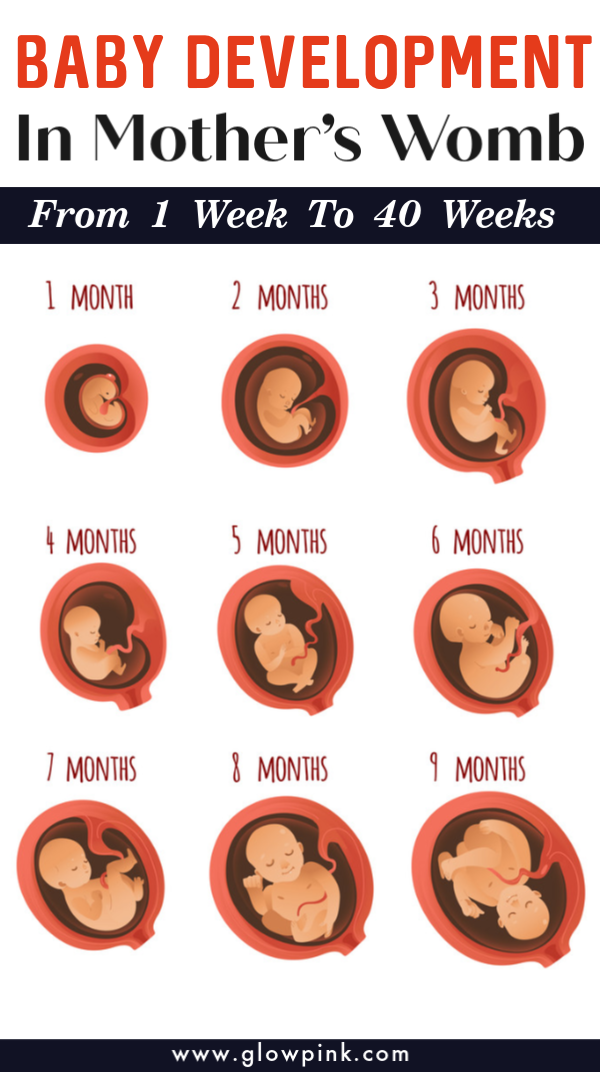
Try adding a small portion to a trail mix with nuts and seeds for an on-the-go protein- and fiber-filled snack.
Fish liver oil is made from the oily liver of fish, most often cod. It’s rich in the omega-3 fatty acids EPA and DHA, which are essential for fetal brain and eye development.
Supplementing with fish oil may help protect against preterm delivery and may benefit fetal eye development.
Fish liver oil is also very high in vitamin D, of which many people don’t get enough. It may be highly beneficial for those who don’t regularly eat seafood or supplement with omega-3 or vitamin D.
A single serving (1 tablespoon or 15 milliliters) of fish liver oil provides more than the recommended daily intake of omega-3, vitamin D, and vitamin A.
However, it’s not recommended to consume more than one serving per day, as too much preformed vitamin A can be dangerous for your baby. High levels of omega-3 may also have blood-thinning effects.
Low mercury fish like salmon, sardines, canned light tuna, or pollock can also help get you to your omega-3 goals.
Say it with me: We all have to stay hydrated. And pregnant folks especially. During pregnancy, blood volume increases by about 45 percent.
Your body will channel hydration to your baby, but if you don’t watch your water intake, you may become dehydrated yourself.
Symptoms of mild dehydration include headaches, anxiety, tiredness, bad mood, and reduced memory.
Increasing your water intake may also help relieve constipation and reduce your risk of urinary tract infections, which are common during pregnancy.
General guidelines recommend that pregnant women drink about 80 ounces (2.3 liters) of water daily. But the amount you really need varies. Check with your doctor for a recommendation based on your specific needs.
Keep in mind that you also get water from other foods and beverages, such as fruit, vegetables, coffee, and tea.
Pro tip: Try keeping a reusable water bottle on hand so that you can quench your thirst throughout the day.
Your growing baby is just waiting to slurp up all those nutrient-dense foods from a well-rounded eating plan of whole grains, fruits and veggies, lean proteins, and healthy fats.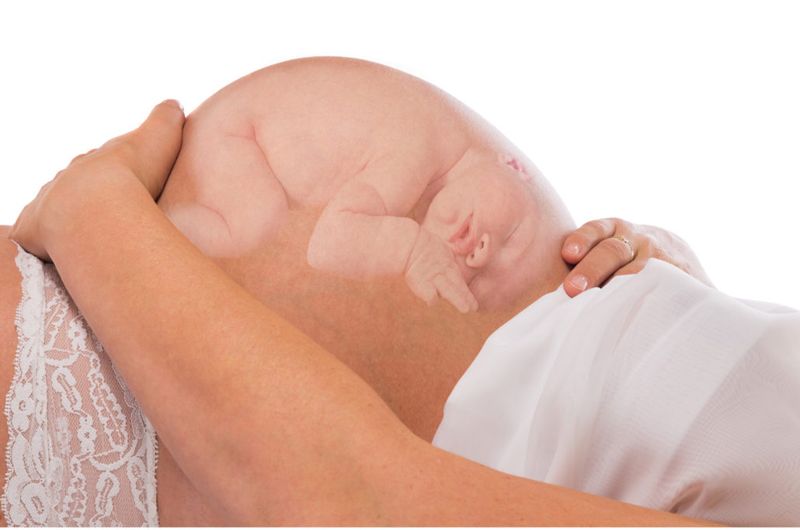
There’s a whole world of delicious options that give you and your baby everything you’ll need. Keep your healthcare team informed of your eating choices and let them guide you on a plan with any necessary supplements.
This list should be a good start towards a healthy, well-nourished pregnancy.
Quick tips for foods to eat when pregnant
- Dairy products, especially yogurt, are a great choice. They help you meet increased protein and calcium needs.
- Legumes are super sources of folate, fiber, and many other nutrients. Folate is a very important nutrient during pregnancy.
- Sweet potatoes are an excellent source of beta carotene, which your body transforms into vitamin A. Vitamin A is important for the growth and differentiation of cells in your growing baby.
- Salmon contains the essential omega-3 fatty acids EPA and DHA, which are important for brain and eye development in your growing baby. It’s also a natural source of vitamin D.

- Whole eggs are incredibly nutritious and a great way to increase your overall nutrient intake. They also contain choline, an essential nutrient for brain health and development.
- Broccoli and leafy greens contain most of the nutrients that you’ll need. They’re also rich in fiber, which may help prevent or treat constipation.
- Lean meat is a good source of high-quality protein. Beef and pork are also rich in iron, choline, and B vitamins, all of which are important nutrients during pregnancy.
- Berries contain water, carbs, vitamin C, fiber, vitamins, antioxidants, and plant compounds. They may help you increase your nutrient and water intake.
- Whole grains are packed with fiber, vitamins, and plant compounds. They’re also rich in B vitamins, fiber, and magnesium.
- Avocados contain high amounts of monounsaturated fatty acids, fiber, folate, and potassium. They may help relieve leg cramps, too.
- Dried fruit may be highly beneficial for pregnant women since they’re small and nutrient-dense.
Just make sure to limit your portions and avoid candied varieties, to prevent excess sugar intake.
- Drinking water is important as your blood volume increases during pregnancy. Adequate hydration may also help prevent constipation and urinary tract infections.
Fruits to Eat During Pregnancy: Nutritious Options
During pregnancy, your little one depends on you to provide the nutrition they need. That’s why it’s time to make sure you’re making the best food choices for baby — and for yourself.
It’s important to eat a well-balanced diet that includes lots of fruits and veggies. These powerful foods have much of what you — and your baby — need to stay healthy.
Let’s talk about the very best ones you’ll want to keep on hand. And don’t forget: Frozen and canned fruits and vegetables are often just as nutritious as the fresh kind, so don’t feel like you have to get them all straight from the farmer’s market.
When you’re pregnant, it’s important to eat nutritious food and avoid empty calories. In fact, if you eat mostly junk food during your pregnancy, you may be setting up your baby for a lifelong preference for fat and sugar, according to a 2013 study.
In fact, if you eat mostly junk food during your pregnancy, you may be setting up your baby for a lifelong preference for fat and sugar, according to a 2013 study.
Fruits and vegetables are filled with nutrients. When you add a variety of them to your diet, you’ll likely get most of the vitamins, minerals, and fiber that you and your baby need.
Eating fruits and vegetables also helps prevent constipation, a common symptom during pregnancy. Get thee to a produce aisle and you won’t regret it.
If you’re pregnant, you might be craving something sugary. But try not to make a habit of reaching for a piece of cake or a candy bar to satisfy that sweet tooth. Fruit is the perfect solution.
It offers the sweetness you crave and the nutrition you need. Enjoy these fruits as part of a healthy pregnancy diet in salads, in smoothies, over yogurt, or as a snack anytime.
1. Oranges
Oranges help you stay hydrated. They’re also a great source of folate, or folic acid.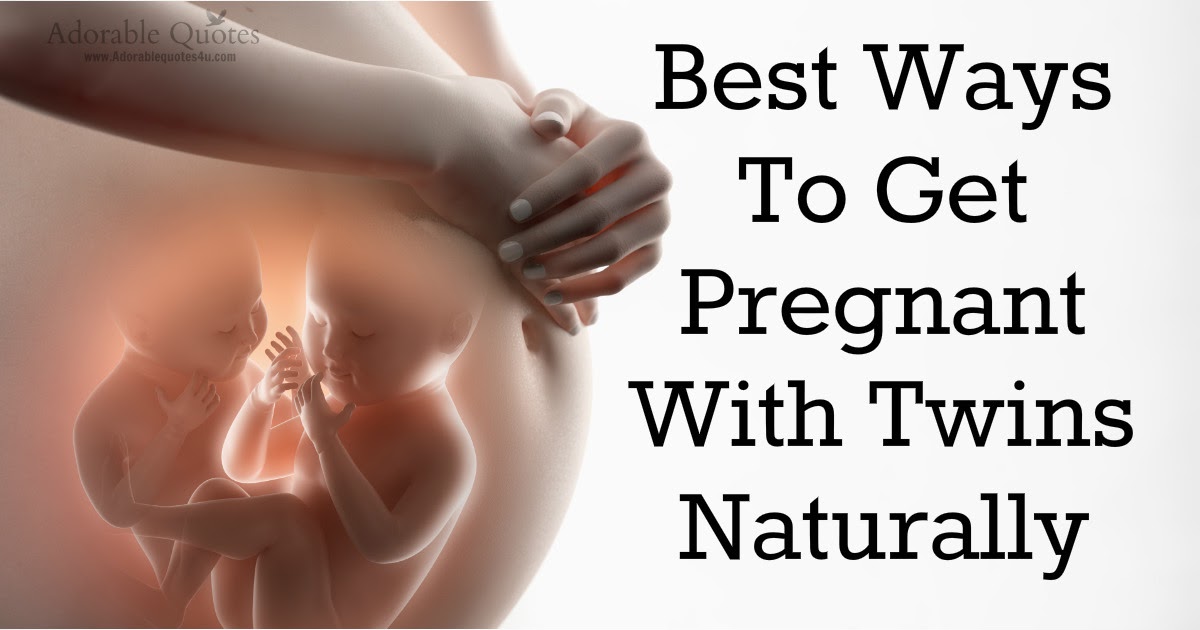 Folate is a B vitamin that’s very important in helping prevent brain and spinal cord defects, also known as neural tube defects.
Folate is a B vitamin that’s very important in helping prevent brain and spinal cord defects, also known as neural tube defects.
The American College of Obstetrics and Gynecology (ACOG) recommends taking 400 micrograms (mcg) of folic acid per day before you start trying for a baby, then at least 600 mcg per day while pregnant.
Oranges are a great source of vitamin C, too. Vitamin C is an antioxidant that helps prevent cell damage. It also helps your body absorb iron.
Plus, it doesn’t hurt that these little vitamin bombs are so tasty.
2. Mangoes
Mangoes are another great source of vitamin C. One cup gives you 100 percent of your recommended daily allowance.
Mangoes are also high in vitamin A. Vitamin A deficiency at birth is associated with lower immunity and a higher risk of complications, like diarrhea and respiratory infections.
Although rare, it’s possible to get too much vitamin A, according to a 2019 research review. Mangoes are a great addition to your pregnancy diet, but eat them in moderation, along with a variety of other fruits.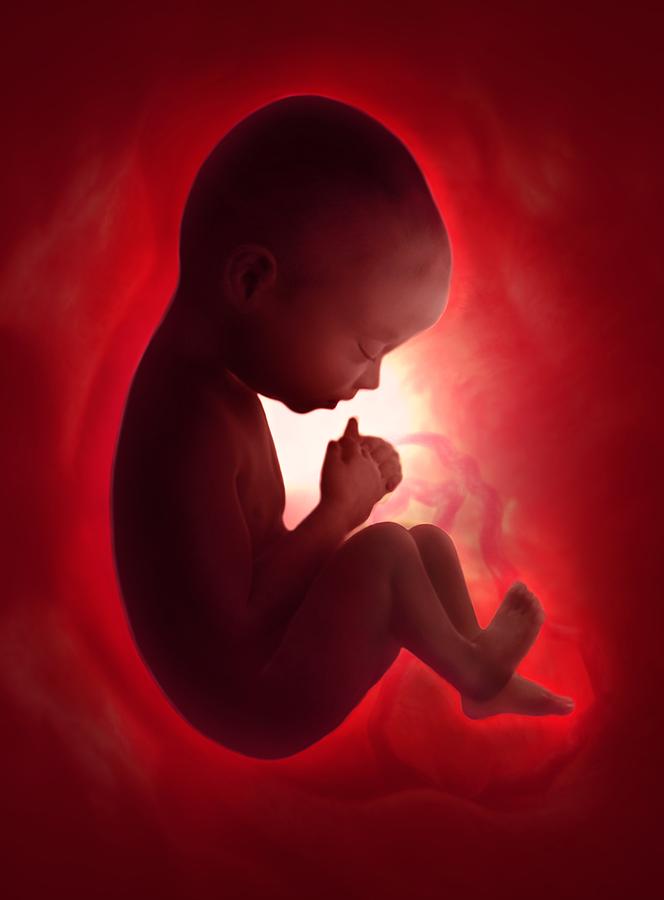
3. Avocados
Avocados have more folate than other fruits. They’re also a great source of:
- vitamin C
- vitamin B
- vitamin K
- fiber
- choline
- magnesium
- potassium
Some women say that avocados help relieve nausea, possibly because of the potassium and magnesium in the fruit.
Potassium may also help relieve leg cramps, a common pregnancy symptom. Leg cramps are often caused by low potassium and magnesium.
Choline is important for the development of your baby’s brain and nerves. Choline deficiency may cause neural tube defects and lifetime memory impairment.
Here are tons of ways to sneak delicious avo into your meals.
4. Lemons
In one 2014 study, pregnant people reported some success in using lemons or lemon scent to help relieve pregnancy-related nausea.
Lemons are also high in vitamin C. They help stimulate the digestive system to relieve constipation.
Consider adding some to your water or tea or using them in this Mediterranean lemon chicken recipe.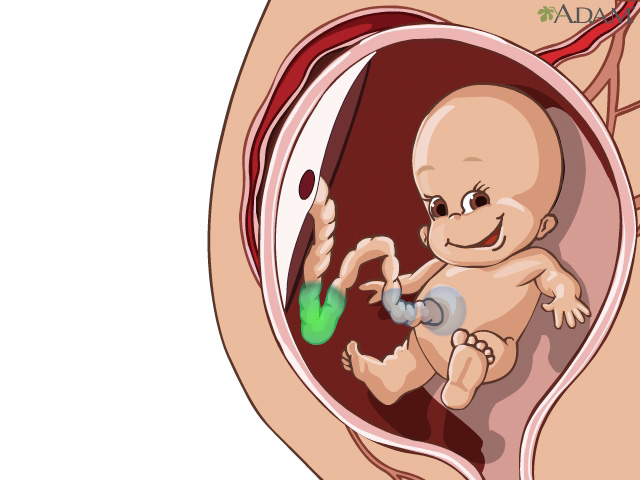
5. Bananas
Bananas are another good source of potassium. They also contain vitamin B6, vitamin C, and fiber.
Constipation is very common during pregnancy. It may be caused by:
- uterine pressure on the intestines
- worry
- anxiety
- a low-fiber diet
- iron in prenatal vitamins
Adding fiber-rich bananas may help. Research from 2014 shows that vitamin B6 may help relieve nausea and vomiting in early pregnancy as well.
6. Berries
Berries — such as blueberries, raspberries, strawberries, blackberries, and goji berries — are rich in all kinds of goodness, such as:
- carbohydrates
- vitamin C
- fiber
- folate
They also contain phytonutrients like flavonoids and anthocyanins.
Carbohydrates give you much-needed energy, and they pass easily through your placenta to nourish your baby.
It’s important to eat mostly nutrient-dense complex carbohydrates like berries instead of processed, simple carbohydrates like doughnuts, cakes, and cookies.
Consider whipping up a smoothie with both bananas and berries for a vitamin-packed meal or snack.
7. Apples
Apples are high in fiber and are a good source of vitamin C. Plus, they contain vitamin A, potassium, and pectin. Pectin is a prebiotic that feeds the good bacteria in your gut.
For the best bang for your nutrient buck, eat the peel — just make sure to rinse it with lots of water first.
Apples are portable and can be added to many recipes, so make sure to stock up when you’re filling your produce bag.
Medical professionals usually recommend eating two to four servings of fruit and four to five servings of vegetables each day.
In general, one serving of fruit is:
- a medium piece of whole fruit (about the size of a tennis ball)
- 1 cup of cut fruit
One serving size of vegetables is:
- 1/2 cup of raw or cooked vegetables
- 1/2 cup of vegetable juice
- 1 cup of leafy greens
When it comes to 100% fruit juices, as long as they’re pasteurized, they’re safe to drink. But you may miss out on some of the nutrients in juice form.
But you may miss out on some of the nutrients in juice form.
Dried fruit can also be used to get nutrients in an on-the-go form. Just be aware that they can be more calorie- and sugar-dense than their fresh counterparts.
Dehydration occurs when you lose more fluids than you take in. It’s always serious, but it’s especially concerning during pregnancy.
Water helps form the placenta and amniotic sac. It also supports your baby’s growth.
If you’re experiencing morning sickness, your risk of dehydration is higher. To avoid dehydration, drink 8 to 12 glasses of water daily. Because fruits contain water, they can help you stay hydrated.
If possible, purchase organic fruit that hasn’t been treated with synthetic pesticides and fertilizers. But keep in mind that eating nonorganic fruit is much better than eating no fruit at all.
To lessen your risk of consuming pesticide residue or bacteria, follow these tips:
- Wash fruit thoroughly, even if it’s prewashed.
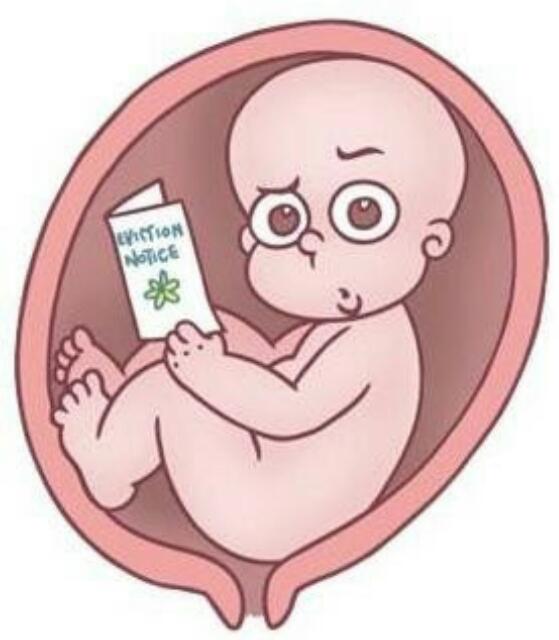
- Remove any bruised areas where bacteria may lurk.
- Drink only pasteurized or boiled fruit juice.
- Avoid eating precut melons, or eat them immediately after cutting.
- Store fresh fruit in the refrigerator, away from raw meat.
Eating fruit during pregnancy helps ensure that you and your baby stay healthy and ready to take on the world.
Fresh, frozen, and canned fruits are all good options. Just make sure no sugar has been added to canned or frozen varieties.
Contact your doctor if you have any questions or concerns about your pregnancy eating plan. If you need more advice on what to eat, here are 13 foods that are great choices.
Q:
What causes food cravings during pregnancy?
Anonymous patient
A:
You may have heard that hormones or nutrient deficiencies cause pregnancy food cravings. For example, if you crave green apples, you may be deficient in pectin, potassium, or vitamin A. The truth is, it’s unclear what causes pregnancy cravings. You may simply want something that tastes tart and sweet. As long as you’re craving foods, it’s OK to give in now and then. If your cravings are unhealthy, try to find healthier alternatives. Call your doctor if you crave non-foods like laundry starch or dirt.
The truth is, it’s unclear what causes pregnancy cravings. You may simply want something that tastes tart and sweet. As long as you’re craving foods, it’s OK to give in now and then. If your cravings are unhealthy, try to find healthier alternatives. Call your doctor if you crave non-foods like laundry starch or dirt.
Nicole Galan, RNAnswers represent the opinions of our medical experts. All content is strictly informational and should not be considered medical advice.
How the baby is fed in the womb
In the first two weeks after fertilization, while the egg has not yet had time to implant into the uterine wall and acquire the placenta, it receives nutrients from its thickened inner shell - the yolk sac.
From the fourth week, the embryo receives the oxygen and nutrients it needs through the chorionic villi, which then transforms into the placenta - a reliable home for the baby, which protects him, and is also the main organ that exchanges between mother and fetus.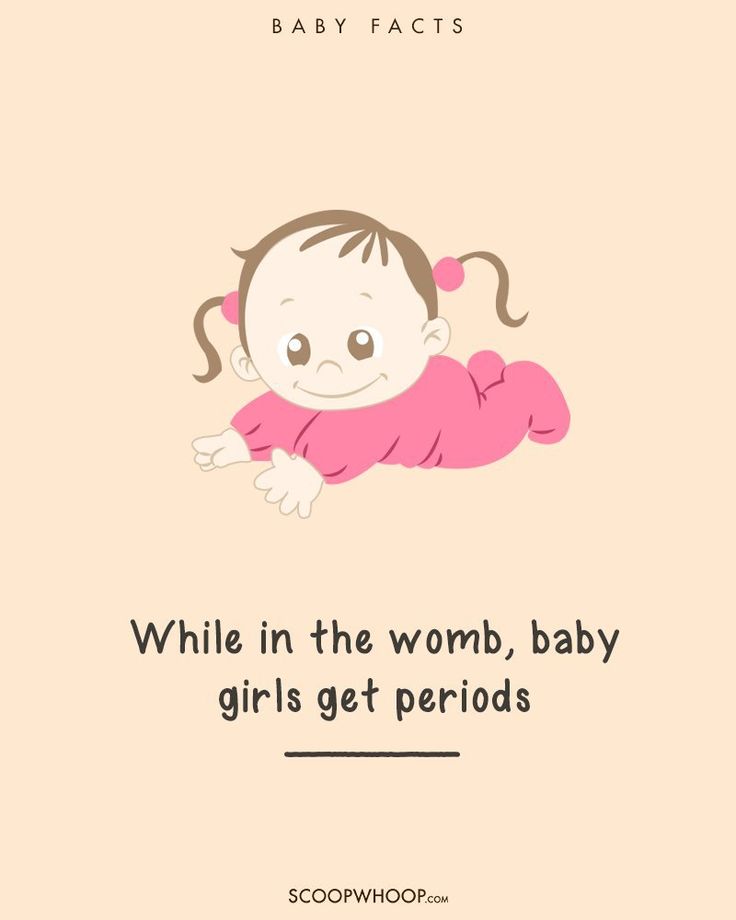 The placenta is also called the baby's place. This is a temporary organ that is formed and works only during pregnancy.
The placenta is also called the baby's place. This is a temporary organ that is formed and works only during pregnancy.
It is through the placenta that the baby communicates with the mother's body. From here, it receives proteins necessary for the structure of tissues, carbohydrates for energy and maintenance of the body, and fats, vitamins and minerals for proper metabolism. Through the placenta, the child also receives oxygen - without it, the body of the fetus cannot exist. All metabolic products are also excreted through the placenta. The placenta protects the child from infection, prevents immunological conflict between the foreign tissues of the mother and the child, and supplies both organisms with the hormones necessary for their development.
See also: How to restore breasts after pregnancy
its bones and soft tissues. The fetus developing in the uterus requires a certain amount of proteins, fats, carbohydrates, vitamins and minerals. All these substances enter the mother's body with food, are broken down in the digestive system to simple molecules and absorbed into the blood, which delivers all the vital components to the fetus.
All these substances enter the mother's body with food, are broken down in the digestive system to simple molecules and absorbed into the blood, which delivers all the vital components to the fetus.
The womb is a unique microsystem that protects the baby and constantly adapts to its changing needs. Mother and fetus organisms work in unison. Even a slight change in the level of one of the indicators of the composition of the child's blood instantly causes a compensatory reaction of the mother's body. This feedback guarantees the supply of all nutrients, vitamins and minerals necessary for the normal growth and development of the baby. At the same time, this ensures the removal of the waste products of the fetus from its body.
The fetus is connected to the mother's body through the placenta and vessels that form the umbilical cord. The umbilical cord is made up of two arteries and a vein, similar to a cord with several ropes, which are twisted together and covered with a sheath. This makes the umbilical cord extremely durable. The umbilical cord can twist and turn, and the force of blood flow in the arteries keeps it taut so your baby can't get tangled up in it. During pregnancy, the length and width of the umbilical cord increases with the growth of the fetus.
This makes the umbilical cord extremely durable. The umbilical cord can twist and turn, and the force of blood flow in the arteries keeps it taut so your baby can't get tangled up in it. During pregnancy, the length and width of the umbilical cord increases with the growth of the fetus.
During pregnancy, the placenta also changes to meet the nutritional needs of the fetus. It controls the transfer of nutrients from mother to baby, as well as hormones and other substances. However, if the mother's diet is deficient in nutrients, the placenta will not be able to fully develop to provide the fetus with an effective supply. The low nutrient content of the mother's blood will permanently inhibit the normal functioning of the placenta. The placenta becomes unnecessary when the umbilical cord is cut - at this moment all the organs of the child begin to function independently.
Read also: Why shouldn't pregnant women wear heels?
The baby is able to extract from the mother's body some of the substances he needs, for example, most often this refers to calcium, which is washed out of the mother's bones if this mineral is absent in her diet. But his need for energy and nutrients is met in a different way. And if the mother suffers from malnutrition, the child will suffer with her. If a mother is systematically malnourished, the placenta will not be able to fully develop to supply the developing baby with everything it needs. This, in turn, increases the risk of miscarriage and premature birth, as well as low birth weight in the newborn. It is necessary to take your pregnancy with all responsibility and make your diet complete and balanced.
But his need for energy and nutrients is met in a different way. And if the mother suffers from malnutrition, the child will suffer with her. If a mother is systematically malnourished, the placenta will not be able to fully develop to supply the developing baby with everything it needs. This, in turn, increases the risk of miscarriage and premature birth, as well as low birth weight in the newborn. It is necessary to take your pregnancy with all responsibility and make your diet complete and balanced.
Read Ivona.ua in Google News
Let's find out how a baby eats in the womb? The development of a child in the womb by weeks
People learn how conception occurs in schools thanks to an anatomy course. But not many people know what happens next. How does a baby eat in the womb?
The beginning of a new life
The first days after fertilization, the egg receives nutrients from its own yolk sac. This happens until it implants in the wall of the uterus and acquires a placenta.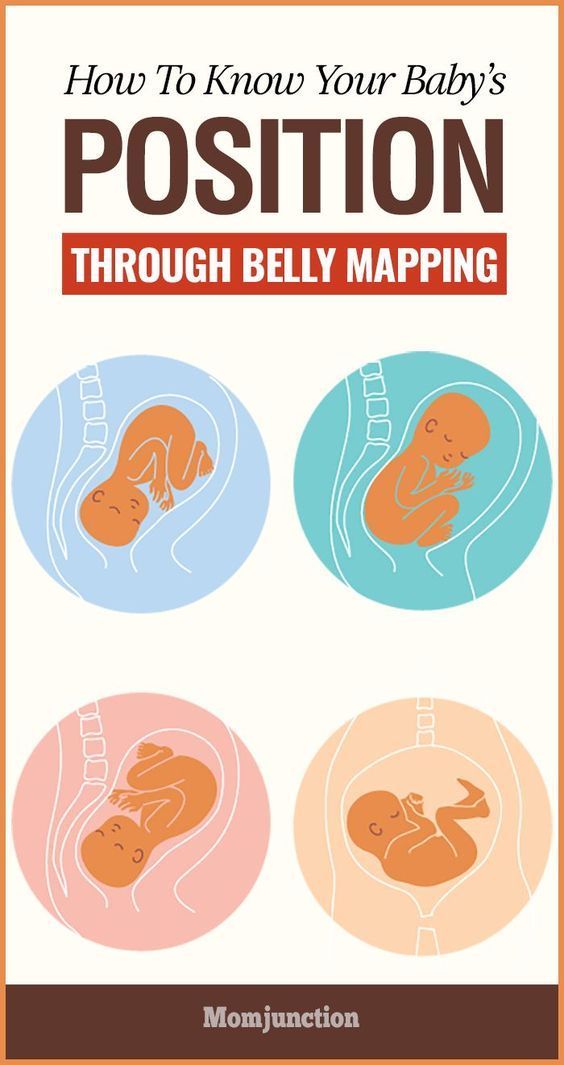 While the fetus is in the mother's abdomen, he receives all the necessary substances from her body. Based on this, a pregnant woman should diversify her diet and eat well.
While the fetus is in the mother's abdomen, he receives all the necessary substances from her body. Based on this, a pregnant woman should diversify her diet and eat well.
She must definitely consume all the necessary vitamins, minerals, limit the use of smoked, salty, spicy foods. This is very important for the development of the baby.
There is an opinion among the people that a newly born baby is like a "white" sheet of paper. But this is far from true. What does a baby feel in the womb? All the emotions that mom experiences, he also feels, whether it be joy or anxiety, feelings or happiness. It is affected by illness and the situation in the family.
After 4 weeks, the embryo receives the necessary nutrients and oxygen through the chorionic villi, which turns into the placenta. It not only protects the baby from internal and external factors, but also through it the mother and fetus exchange the substances necessary for energy. A real home! The metabolic products of the baby are also excreted through the placenta. It is also customary to call it "children's place".
It is also customary to call it "children's place".
It is very interesting how the fetus is fed in the womb. Let's say the future mom ate an apple. The digestive system breaks down nutrients into simple molecules. After that, the process of their absorption into the blood begins, which delivers all the necessary components to the body of the embryo.
How does a baby eat in the womb?
The umbilical cord, attached to the placenta, feeds the fetus directly. It contains 2 arteries and 1 vein. Venous blood flows through arteries, and arterial blood flows through veins. Venous blood flows from the baby towards the placenta and stores metabolic products. It's that simple! Now you know how a baby eats in the womb. Interestingly, the width and length of the umbilical cord grows with the child. By the time of birth, its dimensions can reach from 30 centimeters to a whole meter.
Some nuances
We have already considered how the baby is fed in the womb.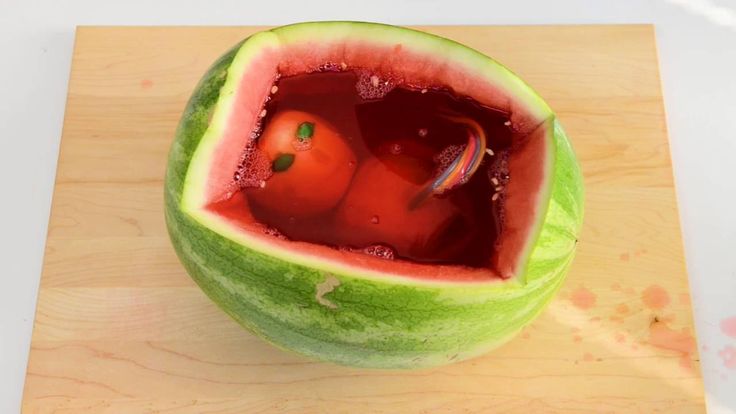 But it should be noted that the baby eats the same as the mother only if she consumes all the necessary vitamins and elements. And if the mother's nutrition is inadequate, the baby takes all the necessary "building materials" for the growing body from her tissues and cells. Is it dangerous for a woman? Of course yes! Therefore, the state of her health is deteriorating. There are problems with hair, teeth, nails. The child's need for calcium is great, since he must create his skeleton out of "nothing".
But it should be noted that the baby eats the same as the mother only if she consumes all the necessary vitamins and elements. And if the mother's nutrition is inadequate, the baby takes all the necessary "building materials" for the growing body from her tissues and cells. Is it dangerous for a woman? Of course yes! Therefore, the state of her health is deteriorating. There are problems with hair, teeth, nails. The child's need for calcium is great, since he must create his skeleton out of "nothing".
If the mother uses harmful substances
How does a child eat in the womb, if she does not think about the consequences at all. We should not forget that the child will get not only useful, but also substances that are harmful to a small body if the mother smokes, uses alcohol or drugs. This will adversely affect the health of the unborn baby. Doctors advise well in advance of planning pregnancy to abandon these harmful habits.
Oxygen for baby
How does the fetus breathe and eat in the womb? It is very important for any living being, including humans, to receive oxygen, it is impossible to live without it.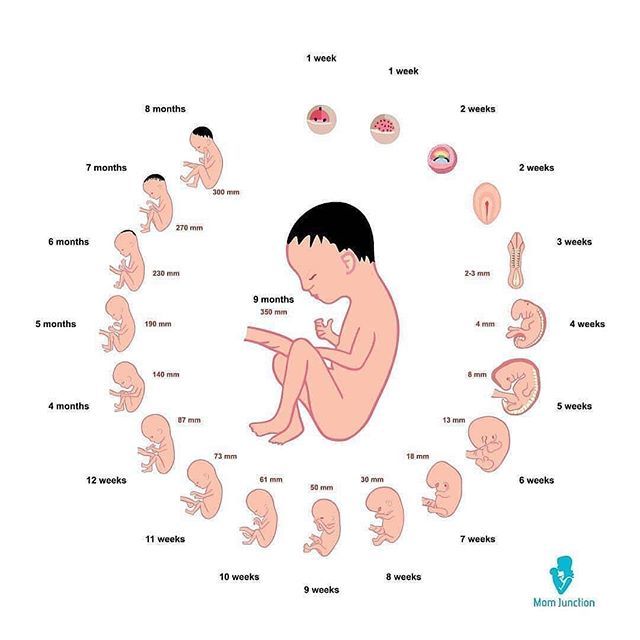 If the brain is not supplied with enough oxygen, then it suffers. The fetus does not breathe with the help of the lungs, it receives the right amount of oxygen through the placenta. Therefore, it is so important that the mother breathes properly and stays in the fresh air as long as possible. And during childbirth, proper breathing is important. It will help keep the child in excellent condition.
If the brain is not supplied with enough oxygen, then it suffers. The fetus does not breathe with the help of the lungs, it receives the right amount of oxygen through the placenta. Therefore, it is so important that the mother breathes properly and stays in the fresh air as long as possible. And during childbirth, proper breathing is important. It will help keep the child in excellent condition.
Pregnancy week by week
You are the happiest person on earth! You will soon become a father or mother! Do you know everything about the development of a child in the womb by weeks?
- 1-4 weeks. During this time, the fetus develops the circulatory system and the nervous system.
- 5-8 weeks. The brain begins to control the heart and muscle movement. Already in this period, the baby knows how to move, but the mother still does not feel it, since he is very small. The eyelids, inner and outer ear of the baby appear. By 8 weeks, he already looks like a man.
 The stomach begins to produce gastric juice. By blood it is already possible to establish the Rh factor. You can see tiny fingers. Mimicry develops.
The stomach begins to produce gastric juice. By blood it is already possible to establish the Rh factor. You can see tiny fingers. Mimicry develops.
- 9-16 weeks. The weight is approximately 2 grams, and the height is already 4 cm. The genitals are forming. The kid already knows how to suck his finger, and he does this when he gets completely bored. He begins to hear sharp sounds and can even close his ears with his palms. And this suggests that he has formed a vestibular apparatus. Hair grows on the head, and eyebrows and cilia grow on the face. He can already smile involuntarily.
- 20-24 weeks. Your baby has already grown noticeably, his height is about 30 centimeters. And on the fingers of the limbs there are marigolds. The kid can already express his dissatisfaction. Going to bed at night, he sees dreams, this has been proven by scientists. The baby’s skin is red and all wrinkled, but don’t worry, a special lubricant protects it from exposure to water.
 If the baby appears at 24 weeks, he will survive, but, of course, with proper care and medical care. And nothing that its weight is only 500 grams.
If the baby appears at 24 weeks, he will survive, but, of course, with proper care and medical care. And nothing that its weight is only 500 grams.
3rd trimester of pregnancy
- 28 weeks. Weight increases to 1 kg. He already recognizes his mother's most native voice and reacts to it if his mother communicates with him. Talk to the baby, he will already hear everything said. At this time, childbirth is considered premature.
- 32 weeks. Do not worry if you notice that the baby has begun to move less. He just doesn't have enough space. Its weight is approximately 2 kg. Research indicates that he may dream of something.
- 34 weeks. The weight of the child is slightly more than 2 kg. Most often, at 34 weeks, the head is already down. The lungs have finally developed, so that in the event of a premature birth, he will breathe without any help.
- 35 weeks. Actively accumulates fat on the limbs. Hearing is fully developed. Most often, at the 35th week of pregnancy, it becomes difficult for expectant mothers to breathe.
 This is due to the fact that the fetus is located throughout the uterine cavity.
This is due to the fact that the fetus is located throughout the uterine cavity. - 36 weeks. From now on, the baby adds 28 grams every day. Mom is getting more and more difficult to move around. He is fully formed.
- 37 weeks. Oxygen to the baby still comes through the umbilical cord. It weighs about 2800 grams.
- 38 weeks. The fluff that previously covered the skin of the child disappears. Since he breathes liquid, hiccups may occur. The jolts are getting more intense. Hair on the head can be longer than 2 cm.
- 39-40 weeks. The baby continues to accumulate fat. Growth varies from 40 to 60 centimeters.
A little higher, the development of a child in the womb by weeks was described. But remember that labor can begin as early as the 38th week, and this is considered normal. Such births are timely. As a rule, at birth, the weight of the baby is from 3 to 4 kg, and the height is about 50 cm. As soon as he is born, you will hear the first cry.